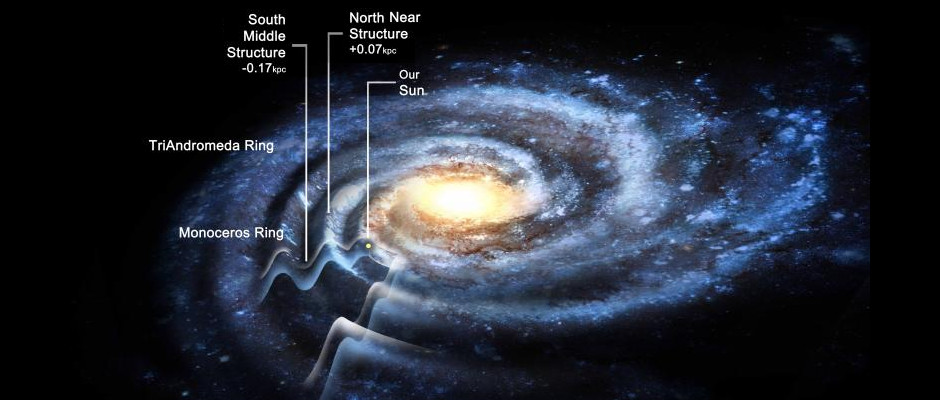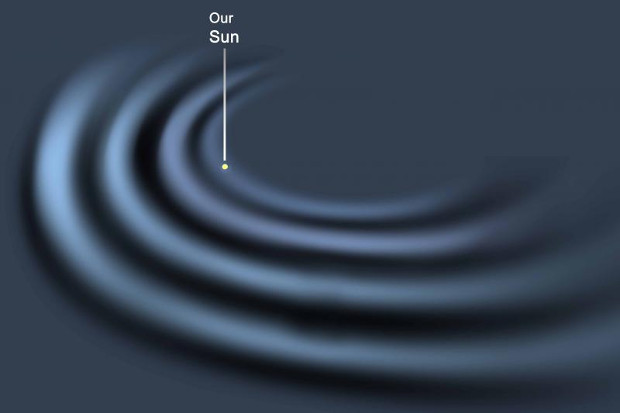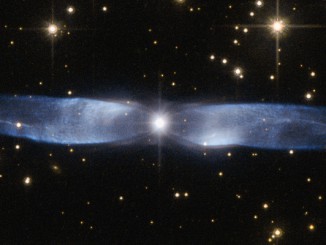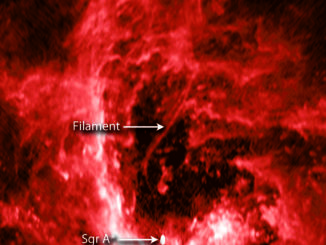
“In essence, what we found is that the disc of the Milky Way isn’t just a disc of stars in a flat plane — it’s corrugated,” said Heidi Newberg, professor of physics, applied physics, and astronomy in the Rensselaer School of Science. “As it radiates outward from the Sun, we see at least four ripples in the disc of the Milky Way. While we can only look at part of the Galaxy with this data, we assume that this pattern is going to be found throughout the disc.”
Importantly, the findings show that the features previously identified as rings are actually part of the galactic disc, extending the known width of the Milky Way from 100,000 light-years across to 150,000 light-years, said Yan Xu, a scientist at the National Astronomical Observatories of China (which is part of the Chinese Academy of Science in Beijing), former visiting scientist at Rensselaer, and lead author of the paper.
“Going into the research, astronomers had observed that the number of Milky Way stars diminishes rapidly about 50,000 light-years from the centre of the Galaxy, and then a ring of stars appears at about 60,000 light-years from the centre,” said Xu. “What we see now is that this apparent ring is actually a ripple in the disc. And it may well be that there are more ripples further out which we have not yet seen.”
Prof. Heidi Jo Newberg explains that the stellar disk of the Milky Way is corrugated, and extends out to include the Monoceros Ring, at the Space Telescope Science Institute.
The research, funded in part by the National Science Foundation and titled “Rings and Radial Waves in the Disk of the Milky Way,” was published March 11th in the Astrophysical Journal. Newberg, Xu, and their collaborators used data from the Sloan Digital Sky Survey (SDSS) to show an oscillating asymmetry in the main sequence star counts on either side of the galactic plane, starting from the Sun and looking outward from the galactic centre. In other words, when we look outward from the Sun, the mid-plane of the disc is perturbed up, then down, then up, and then down again.
“Extending our knowledge of our Galaxy’s structure is fundamentally important,” said Glen Langston, NSF program manager. “The NSF is proud to support their effort to map the shape of our Galaxy beyond previously unknown limits.”
The new research builds upon a 2002 finding in which Newberg established the existence of the “Monoceros Ring,” an “over-density” of stars at the outer edges of the Galaxy that bulges above the galactic plane. At the time, Newberg noticed evidence of another over-density of stars, between the Monoceros Ring and the Sun, but was unable to investigate further. With more data available from the SDSS, researchers recently returned to the mystery.
“I wanted to figure out what that other over-density was,” Newberg said. “These stars had previously been considered disc stars, but the stars don’t match the density distribution you would expect for disc stars, so I thought ‘well, maybe this could be another ring, or a highly disrupted dwarf galaxy.”
When they revisited the data, they found four anomalies: one north of the galactic plane at 2 kilo-parsecs (kpc) from the Sun, one south of the plane at 4-6 kpc, a third to the north at 8-10 kpc, and evidence of a fourth to the south 12-16 kpc from the Sun. The Monoceros Ring is associated with the third ripple. The researchers further found that the oscillations appear to line up with the locations of the Galaxy’s spiral arms. Newberg said the findings support other recent research, including a theoretical finding that a dwarf galaxy or dark matter lump passing through the Milky Way would produce a similar rippling effect. In fact, the ripples might ultimately be used to measure the lumpiness of dark matter in our Galaxy.




